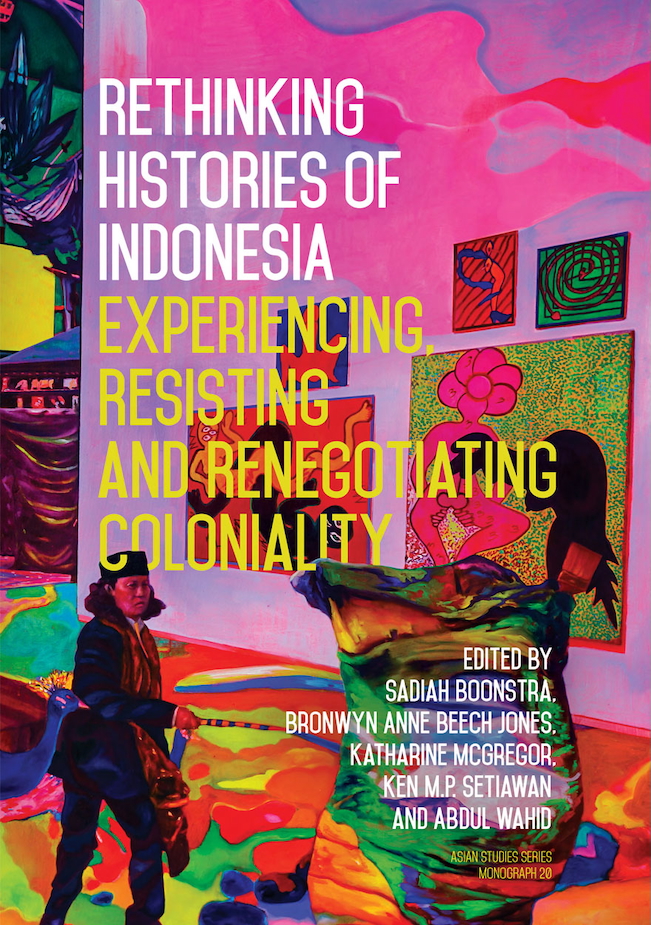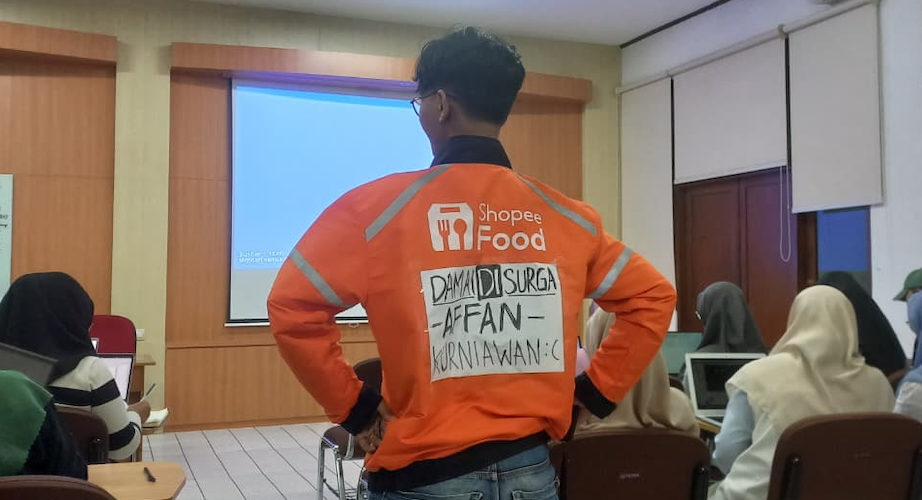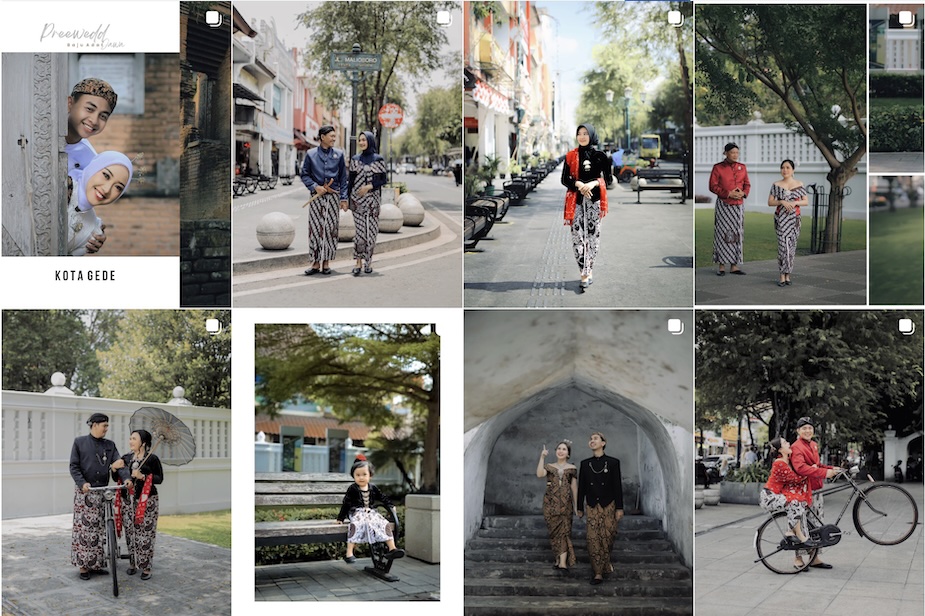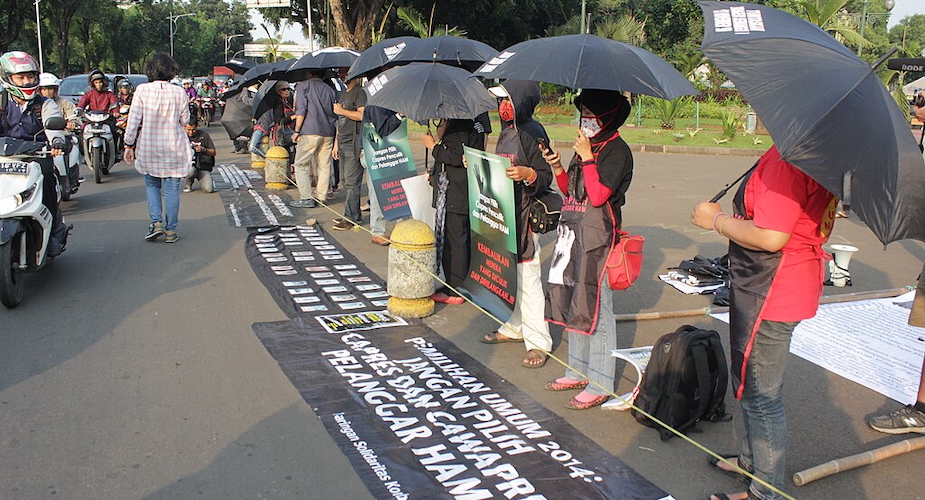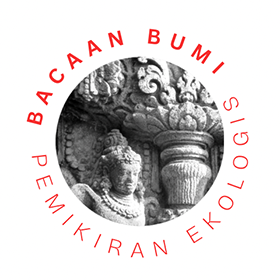This is a significant and exciting volume in terms of its scale, the range of disciplines, approaches and topics covered, and ultimately, for its contribution to the field of Indonesian history and historiography, and Indonesian studies and decolonial studies more broadly.
The contributors to this book do students of Indonesian history but also its cultures, society and politics, a great service offering new sources, voices, approaches and perspectives, or as the editors put it, ‘alternative windows into colonial history …. leading up to and including the Revolution of 1945-49’. They bring a fresh and vital critique of not only Indonesia’s colonial history but its continuing lived influences on present day Indonesia and beyond.
The book is certainly of its time, as around the world academies and centres of knowledge and learning, both in the former colonial powers and decolonised nations, move to re-interrogate these pasts and their enduring legacies for the present. But nor is the book arguing for an entirely radical approach. Ronit Ricci summarises the approach of the book as a whole when she writes in her chapter:
One way to amend the legacy of heavy reliance on sources inherited from the colonising side, and to see a more nuanced historical picture is to bring other voices and perspectives into view. The point is not to swing full scale in the other direction and present the colonised perspective as somehow ‘truly authentic’, but to engage with the different ways of knowing, seeing and acting by members of different social classes, ethnic groups, genders and nationalities…and acknowledge the vast multiplicity of experiences and views.
As the editors note, whilst explicit postcolonial and decolonial approaches are not new and are not entirely absent from Indonesian studies, they have been slower to arrive.
The contributors to this volume seek out what they describe as ‘new’ sources and approaches to their subjects. They are also keen to extend the temporal scholarly focus beyond the revolution (which has dominated), to understand ‘decoloniality…as a process that involves not just ousting colonial power, but the dismantling of the long legacies and modes of thinking that permeate almost all aspects of society’.
These new perspectives come from examining visual and written sources, oral histories, built environments, museums and monuments, with priority given to Indonesian perspectives; ‘centring Indonesian voices’. They also revisit colonial Dutch archival (text and visual) sources, ‘reading’ them through the ‘lens of coloniality’ to provide a different perspective. As the editors explain, the scholarly focus is a deliberate one, ‘on how Indonesians experienced, negotiated and resisted these colonial categorisations’. There is a focus on the legacies of colonialism in enduring structures within the state and society (culture and heritage, spatial organisation, law and politics), and indeed in Indonesia’s position as a coloniser itself.
Comprising 15 chapters including an extensive introductory chapter, the book includes contributions from leading scholars in their fields, such as Abidin Kusno, Susie Protschky, Kate McGregor, Ken Setiawan and Ronit Ricci, as well as major emerging scholars from Indonesia, Abdul Wahid, Grace Leksana and Ravando among many others. Importantly, the contributors also include those who are practitioners in re/presenting histories in Indonesia today as artists, museum curators and archivists. Each chapter is based on rigorous and innovative research.
Special mention can be made to the group of chapters focused on Indonesia’s ethnic Chinese (Wahid, Harsono and Ravando, Kusno). As mentioned, like many of the other contributions, Wahid begins his study acknowledging and reminding readers of the rich scholarship examining the Netherlands East Indies (NEI) taxation system, and draws from this to bring new insights, especially with respect to evidence of Chinese activism and protest in the face of excessive taxation and coinciding with their racialised legal status. Wahid’s archival research in the NEI tax records adds complexity to what we know about the impacts of the war tax and other excessive taxation on this minority group. Whilst the war provided opportunities for profit for some, this was not the case for everyone with many facing bankruptcy, prison and even exile. Wahid’s research points to the overwhelming dependency of the colonial economy on tax revenues from this group and makes a somewhat radical argument in Indonesian historiography, seeking to position Chinese as major contributors to the colonial and hence later, national economy.
Similarly, FX Harsono and Ravando’s co-authored chapter seeks to recover a history that was literally and figuratively buried. The scale and methodology behind the killings of ethnic Chinese during the revolutionary period, though known about in part, has only more recently been uncovered due to work carried out by these researchers and others. The discovery of mass graves and investigation of local newspapers reveal not only the horror of the massacres carried out by militia at the time, but also the complicity of the Dutch in allowing them to take place in order to extract international sympathy for their ongoing police actions against the revolutionaries. That the killings of ethnic Chinese were, then and since, ‘normalised’ and ‘forgotten’ serves as a reminder, the authors warn, of the endurance of the idea of ‘acceptable violence’ (also discussed by Protschky in her chapter) in Indonesia until today.
A major scholar in postcolonial/decolonial studies with a particular focus on spatial construction, Abidin Kusno continues his examination of Jakarta’s spaces and particular interest in how ethnic Chinese live within it. Wahid’s close and compelling examination of a newspaper column featured in the local daily Sinar Glodok in the early 2000s, offers insights into the legacy of their middleman position in the colonial period and beyond, and the role fear plays in the present day lives of ethnic Chinese, harbouring a numbness to political events. The result is an increased tendency in post-reformasi Indonesia (rather than the reverse) to create ‘bubbles’ – new urban spaces - for themselves, where interaction with non-Chinese is limited and they have control over their security. As Kusno concludes, they are replicating the ghettos of the colonial period.
Special mention also goes to a group of chapters re/examining colonial visual sources: photographs (Protschky) and archives (Wahid; Karabinos and Theo). As the authors explain, these are indeed oft-studied sources but when a ‘coloniality lens’ is applied, and by asking different questions of them, each offers new insights onto their subject. They also demonstrably draw on rich secondary sources to contextualise their investigations of these sources anew. Like Kusno, Protschky’s chapter demonstrates the connection between colonial constructs of ethnicity and how they have become entrenched as enduring stereotypes.
Another key message throughout the volume is that ‘decoloniality’ is an ongoing process; as Karabinos and Theo write in relation to archival return and inherited methods of recordkeeping ‘any process of decolonising archives cannot end at repatriation’. As the chapters in this volume related to museums and repatriation of objects (Boonstra, Arainaikasih, Isabella) also attest, decolonisation in these spaces is largely unresolved. As the book makes clear, the complications brought by imagining and building a new nation out of the revolution in the late 1940s, followed by periods of deep instability and authoritarian control, meant that ‘decoloniality’ was delayed, and indeed enduring colonial structures coopted.
The editors are right to argue that ‘decoloniality’ first requires an ‘awareness and acknowledgement of coloniality’, and through that recognition enhanced understanding and ultimately work to undo its enduring influence. This volume goes a significant way to enhancing such understandings and revealing a multiplicity of perspectives on the past, which, after all, is all we can hope for.
Sadiah Boonstra, Bronwyn Anne Beech Jones, Katharine McGregor, Ken M.P. Setiawan and Abdul Wahid (editors), Rethinking Histories of Indonesia: A Decolonial Approach, ANU Press, 2025.
Jemma Purdey is Coordinating Editor of Inside Indonesia.


